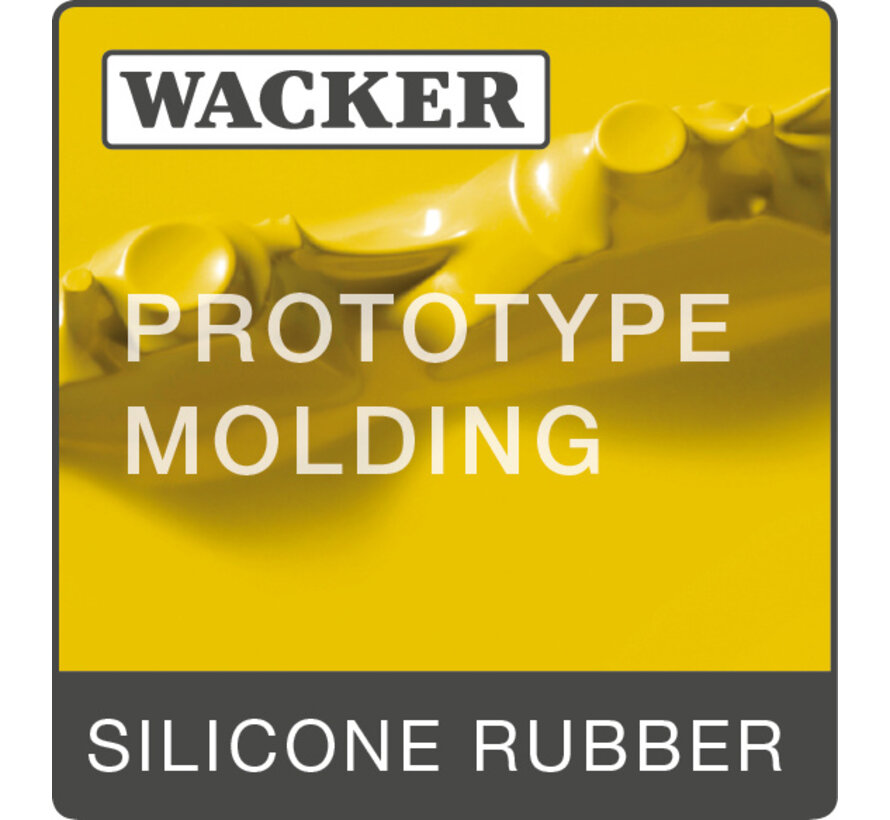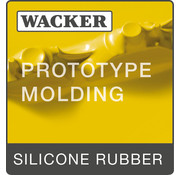Wacker Elastosil M 4642
The Wacker Elastosil M 4642 is a two-component casting silicone. This silicone cures at room temperature.
These silicones have an outstanding resistance to common casting resins!
These silicones are used a lot, especially in prototyping.
Special features
- very good flow
- fast and non-shrink cure at room temperature which
can be accelerated considerably by the application
of heat
- medium Shore A hardness (approx. 37)
- high tear strength
- long-term stability of the vulcanizate’s mechanical
properties
- outstanding resistance to common casting resins
Technical specifications
- Mixing ratio: A/B = 10/1
- Color: dark red
- Processing time (Pot life) at 23°C: 90 minutes
- Curing time at 23°C: 12 hours
- Hardness: Shore A 37
- Density: 1.07 g/cm³
- Tensile strength: 7 N/mm²
- Tear strength: >30 N/mm
- Stretchability: 480 %
- Linear shrinkage: < 0.1 %
Application
Due to its outstanding resistance to casting resins as well as its superior mechanical properties ELASTOSIL® M 4642 A/B is perfectly suitable for all molds of models with undercuts that are to be reproduced in casting resins, and a certain inherent rigidity of the molds is required.
As a medium-Shore addition-curing RTV-2 silicone rubber that cures without undergoing dimensional shrinkage, ELASTOSIL® M 4642 A/B is also extremely suitable for casting all other common reproduction materials, particularly if absolutely accurate copies of models with undercuts are required.
Processing
The platinum catalyst is in component B.
Mix the A and B components carefully and in the indicated ratio (10 parts A and 1 part B by weight). Process the mixture within the pot life and wait with demoulding until it has completely hardened. You can possibly speed up the curing process by placing the whole in an oven. Please note that in that case air bubbles have less time to escape. After demoulding, we recommend baking the mold for a while at 100°C for 2 to 3 hours to degas it completely.
Note: Potlife/demolding time strongly depends on temperature! At a higher temperature, the processing time and demolding time are shorter.
Accelerated curing can also lead to a higher shore hardness.
Extra information
The best way to avoid trapping air bubbles is to vacuum the silicone immediately after mixing. To avoid air bubbles, stir the A and B components well but slowly without knocking in air. It is best to make a “figure-8” movement.
Note: This is an addition silicone. These silicones can be poisoned by sulfur, nitrogen, amino compounds and metal salts. If you are not sure whether the products you use (including gloves, spatulas and cups) contain these ingredients, do a small test first. These substances can be found in many latex gloves, some plastilines, lacquers and adhesives, condensation silicones, 1-component silicone sealant, natural rubbers and 3D printing material (especially stereolithography). If you still want to use this, you will have to put on a protective layer of poly vinyl alcohol.
Shelf life
Provided that the silicone is stored in closed packaging, between 5°C and 25°C, the shelf life is as indaicated on the packaging.
Safety requirements
If you often work with the silicone, it is recommended to wear gloves during processing and to ventilate the room well. For safety instructions, please refer to the safety data sheet.
Components of the addition-curing grade ELASTOSIL® M 4642 A/B contain only constituents that over many years have proved to be neither toxic nor aggressive. Special handling precautions are therefore not required, i.e., only the general industrial hygiene regulations apply.
Product information






